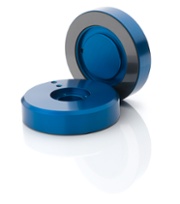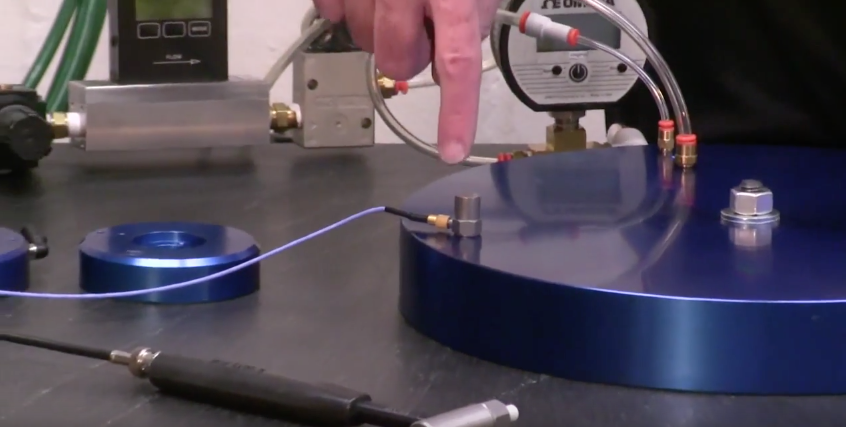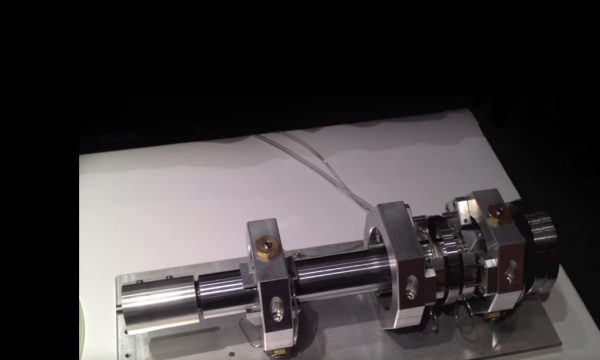 Welcome to the March 22, 2013 edition of Drew’s Views. This is the second video post filmed during independent testing in the Machine Dynamics Lab at Penn State University. This time, Theodore R.S. Deakyne performed the Air Film Dynamics testing under the guidance of Dr. Eric Marsh, Professor of Mechanical Engineering at Penn State, and Director of the Lab. Ted Deakyne and Professor Marsh were, again, kind enough to allow Drew to film the proceedings. To see the video, just click ‘Read More’ and then ‘Play.’
Welcome to the March 22, 2013 edition of Drew’s Views. This is the second video post filmed during independent testing in the Machine Dynamics Lab at Penn State University. This time, Theodore R.S. Deakyne performed the Air Film Dynamics testing under the guidance of Dr. Eric Marsh, Professor of Mechanical Engineering at Penn State, and Director of the Lab. Ted Deakyne and Professor Marsh were, again, kind enough to allow Drew to film the proceedings. To see the video, just click ‘Read More’ and then ‘Play.’
Testing was conducted using a large, custom New Way Vacuum Preloaded (VPL) Air Bearing. The purpose was to investigate damping and stiffness properties in air bearing films.
The subject was a large custom VPL Air bearing: It is 13in in diameter, and a full 2” thick. There is an 80in2 vacuum area in the center of this bearing, and 35in2 of air bearing pressure land at the perimeter. The two regions are separated by an ambient groove.
The porous media face of the VPL Air Bearing features millions of sub-micron sized holes, through which the air pressure is evenly distributed. By balancing this air pressure with vacuum pressure, it enables the latter to hold the bearing down while allowing the former to simultaneously lift it from a guide surface. By adjusting the vacuum and the pressure separately, the fly height and stiffness of this vacuum preloaded air bearing can be optimized.
The laboratory set-up was much the same as was used for the 90mm VPL Air Bearing shown in our February Drew’s Views video blog. Testing was conducted on a granite surface using:
- A signal analyzer.
- A Kistler impulse hammer (Model # 9722A500) calibrated for force.
- A Kistler accelerometer (Model # 8702B25) set to record response in g’s.
For testing purposes, the bearing was positioned face-down on a granite table, and the accelerometer was positioned on the back of the bearing, directly over the air bearing land.
The vacuum pressure and the air bearing pressure were adjusted in order to study the change in the dynamics of the air gap.
A VPL was used because it allowed us to load the air bearing films in a completely non-influencing fashion. That way, we know that any damping we might find is attributable to the air films, and not to some structure that we may have coupled to the bearing in order to try to load the air bearing films.
With 60psi input pressure to the bearing, and no vacuum force, the bearing floated on a relatively un-stiff air film. There was an axial mode at 36Hz, and a tilt mode shape at 50Hz.
But when we applied 800lbs of vacuum force, the first mode — the axial mode — went to 1000Hz and the tilt mode went to 1500Hz. 
The axial mode shape was associated with 6% damping, and the tilt mode was associated with 10% damping.
These are very high frequencies and very high damping numbers to be associated with a structure this large (the bearing was about 25lbs).
So, yet again, this testing shows that air bearings have both a high degree of stiffness and a high degree of damping.
We look forward to making Ted Deakyne’s Report available as soon as it is completed.
And, once again, thank you to Dr. Eric Marsh, Ted Deakyne, and the Machine Dynamics Research Lab at Penn State University.



